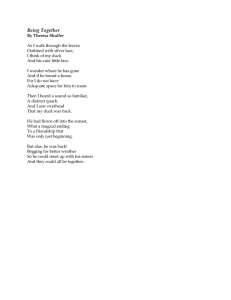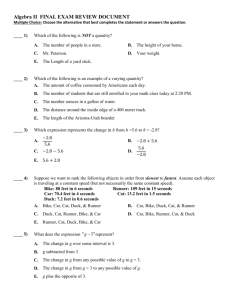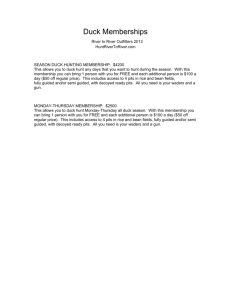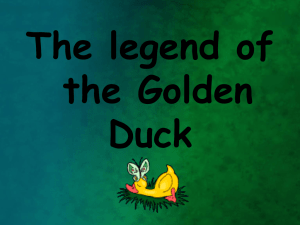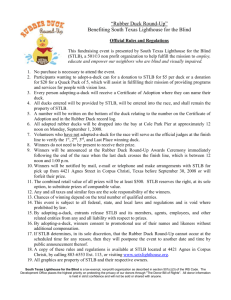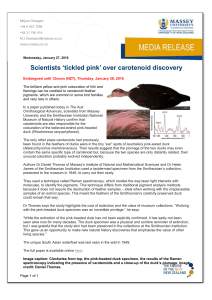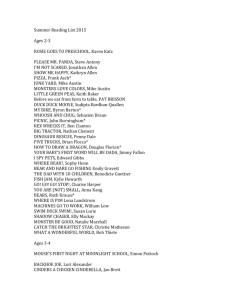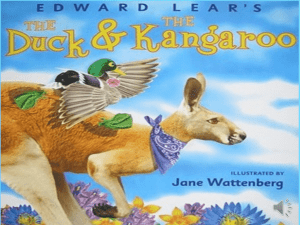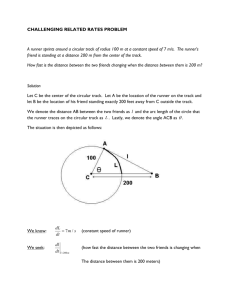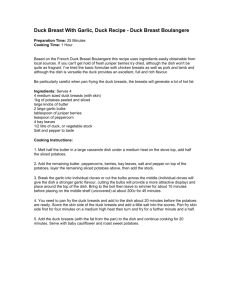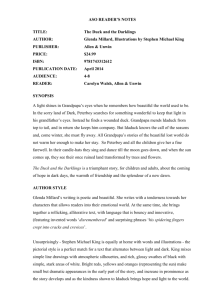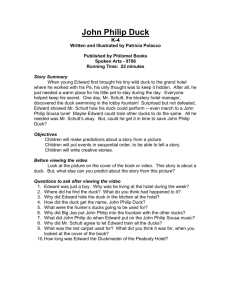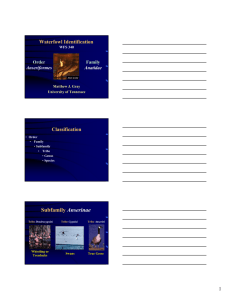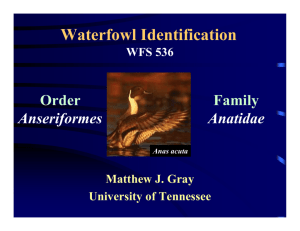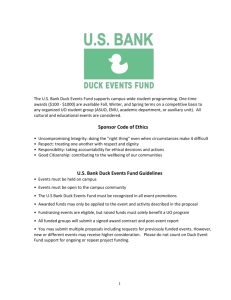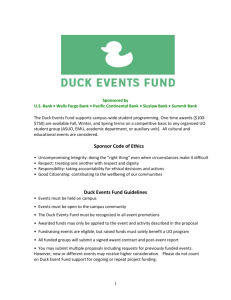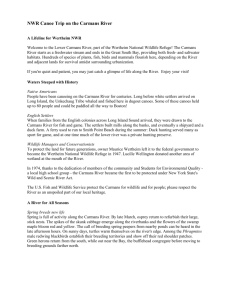In the Wild
advertisement
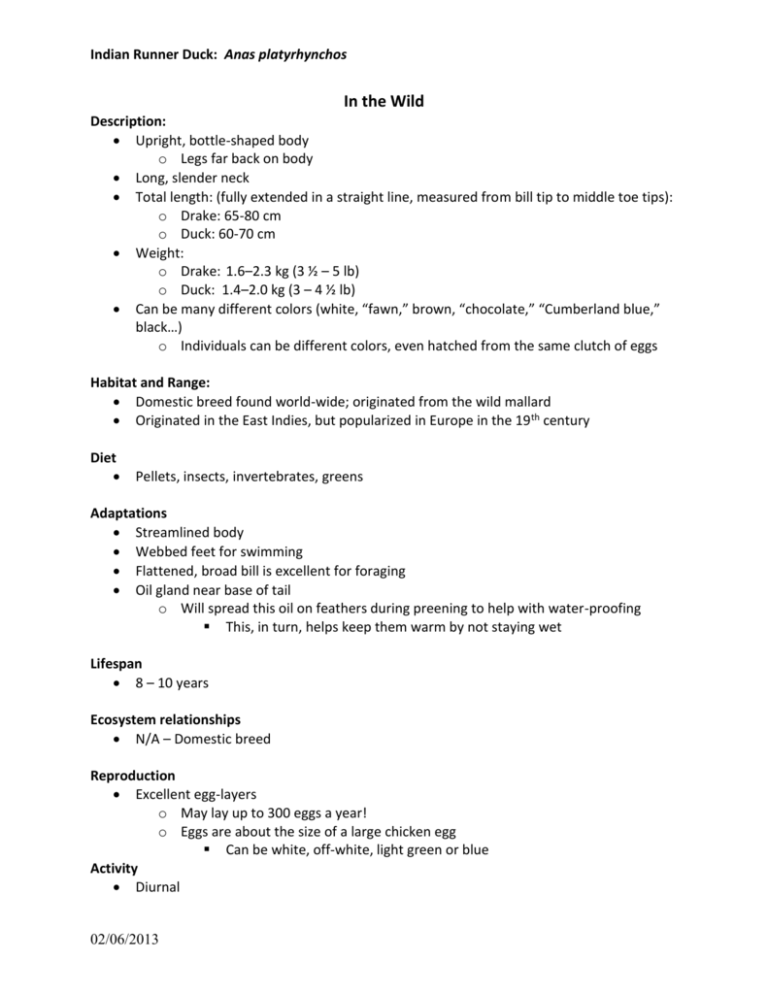
Indian Runner Duck: Anas platyrhynchos In the Wild Description: Upright, bottle-shaped body o Legs far back on body Long, slender neck Total length: (fully extended in a straight line, measured from bill tip to middle toe tips): o Drake: 65-80 cm o Duck: 60-70 cm Weight: o Drake: 1.6–2.3 kg (3 ½ – 5 lb) o Duck: 1.4–2.0 kg (3 – 4 ½ lb) Can be many different colors (white, “fawn,” brown, “chocolate,” “Cumberland blue,” black…) o Individuals can be different colors, even hatched from the same clutch of eggs Habitat and Range: Domestic breed found world-wide; originated from the wild mallard Originated in the East Indies, but popularized in Europe in the 19 th century Diet Pellets, insects, invertebrates, greens Adaptations Streamlined body Webbed feet for swimming Flattened, broad bill is excellent for foraging Oil gland near base of tail o Will spread this oil on feathers during preening to help with water-proofing This, in turn, helps keep them warm by not staying wet Lifespan 8 – 10 years Ecosystem relationships N/A – Domestic breed Reproduction Excellent egg-layers o May lay up to 300 eggs a year! o Eggs are about the size of a large chicken egg Can be white, off-white, light green or blue Activity Diurnal 02/06/2013 Indian Runner Duck: Anas platyrhynchos Other “fun facts”: Run, rather than waddle o This is where their name comes from “Drake” is the name for a male duck o Often a curled tail feather indicates a drake Mostly kept for egg-laying; sometimes for meat o With legs farther back on their bodies, there is more breast meat Called “penguin ducks” by Dutch explorers Cannot fly; wings are too small There are many runner duck enthusiasts o Indian Runner Duck Association in the UK created in 2000 Conservation Status and Threats: “Watch” status by the American Livestock Breeds Conservancy Fewer than 5,000 breeding birds in North America and 10 or fewer breeding flocks At the Zoo Ritz was born in 2000 and acquired from a private breeder. He weighs 1.8 kgs (4 lbs) He is a “fawn” colored drake He has a curled tail feather What We Can Do Although this is not a wild breed, we can still make environmentally responsible lifestyle decisions to help conserve other animals’ habitat – conserve energy, reduce litter and pollution References: http://www.runnerduck.net/ http://www.albc-usa.org/cpl/waterfowl/runner.html http://www.avianweb.com/indianrunnerducks.html 02/06/2013
